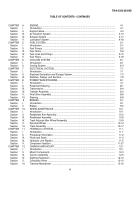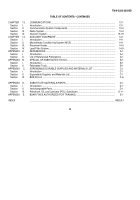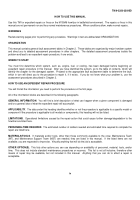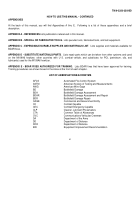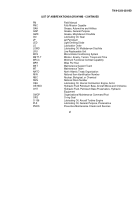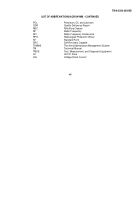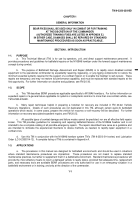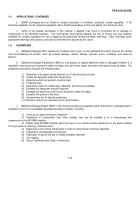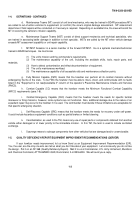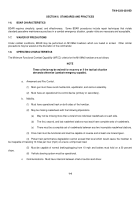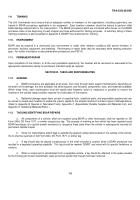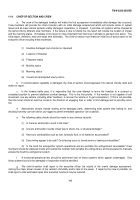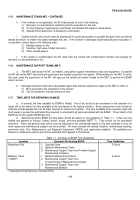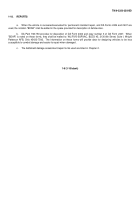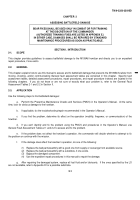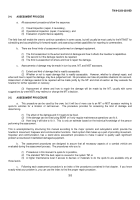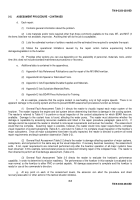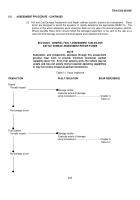TM-9-2350-358-BD - Page 19 of 343
TM 9-2350-358-BD
1-9.
TRAINING
The Unit Commander must ensure that an adequate number of members of his organization, including supervisors, are
trained In BDAR procedures applicable to his equipment.
Each howitzer crewman should be trained to perform initial
battle damage assessment for his crew position.
The BDAR procedures which are contained within boxes on the BDAR
procedure index at the beginning of each chapter are those authorized for training purposes.
A summary listing of these
training procedures is also presented in Appendix E, BDAR Fixes Authorized for Training.
1-10.
ENVIRONMENT
BDAR may be required in a chemically toxic environment or under other adverse conditions with severe limitation in
personnel, facilities, equipment, and materials.
Performance of repair tasks may be necessary while wearing protective
gear.
For further information on decontamination procedures, see FM 3-5.
1-11.
PERMANENT REPAIR
Upon completion of the mission, or at the next practicable opportunity, the howitzer will be recovered or evacuated to the
appropriate maintenance facility for permanent standard repair as required.
SECTION III.
TASKS AND RESPONSIBILITIES
1-12.
GENERAL
a.
BDAR procedures are applicable at all levels, from crew through direct support maintenance, depending on
the extent of the damage, the time available, the skills required, and the parts, components, tools, and materials available.
Within these limits, each maintenance level will rapidly take whatever action is necessary or possible to restore the
howitzer to the combat-ready condition required for continuation of the mission.
b.
Battlefield damage repair items consist of essential tools, substitute parts, and expendable supplies and can
be carried on board each howitzer to enable the crew to rapidly fix the simplest and most common types of damage/failure.
(Refer to Appendix B (Special or Fabricated Tools), Appendix C (Expendable/ Durable Supplies and Materials List), and
Appendix D (Substitute Materials/Parts) ).
1-13.
TAGGING/IDENTIFYING BDAR REPAIRS
a.
All components of a vehicle, which are repaired using BDAR or other techniques, shall be reported on DA
Form 2404, DD Form 1577, or similar conspicuous tag.
The purpose of marking an item which has been repaired using
BDAR techniques is to quickly enable mechanics to recognize these parts when the vehicle is subsequently returned for
permanent standard repair.
b.
Since it is impractical to attach tags to expediently repaired components located on the outside of the vehicle,
the fix shall be reported on DA Form 2404, DD Form 1577, or similar tag.
c.
A tag should also be placed conspicuously in the chief-of-section’s position when a BDAR procedure has
resulted in a degraded operating capability.
This tag should be marked "BDAR" and noted with its specific limitations or
cautions.
d.
When a component is cannibalized from a repairable vehicle, a tag should be attached in the space created
by the missing part to alert downstream repair personnel quickly that the part has been removed.
1-5
Back to Top

